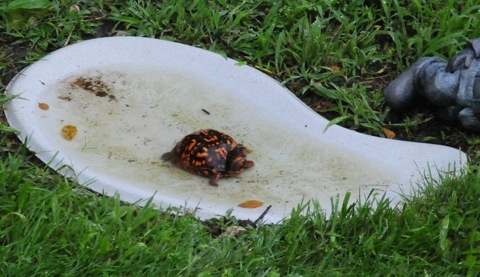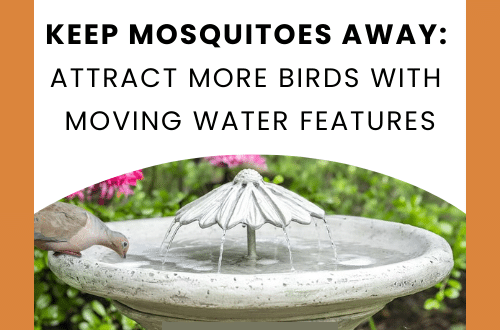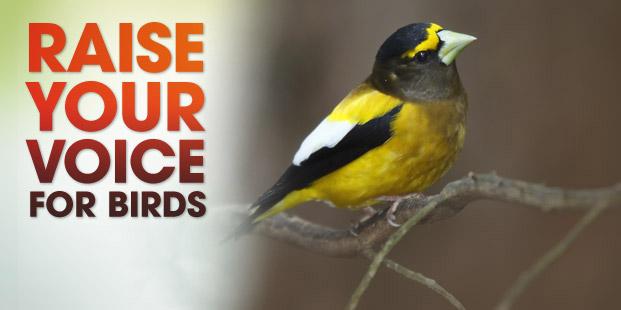-
decorative bird houses aren’t always functional
Buyer beware…. not all decorative birdhouses are meant for feathered friends! Just because they’re made from wood and have an entrance hole, does not mean they’re really suited for wild birds. Many of these wooden, cute decorative birdhouses lack clean-outs and proper ventilation for tiny nestlings. As if sweltering summer temperatures aren’t bad enough, it’s always a few degrees warmer inside a birdhouse, and this can mean death for some nestlings. This is one good reason not place new birdhouses in direct sun. Another factor is year-round weather. Will this birdhouse hold up to the elements? It’s always best to leave birdhouses out year-round as many birds will use them to roost. Protection and shelter from the elements and from predators are the reasons to leave decorative bird houses out year-round. Plus if they’re really cool birdhouses like these, you’d certainly want them for the added aesthetic to your yard.
This Eastern Bluebird Look-Alike hosts a family of Black Capped Chickadees. The house has a trap door clean-out on the bird’s belly, and the entrance is proportionally correct for these smaller songbirds. This size birdhouse with a two-inch entrance isn’t likely to entice any prospects for nesting.
And even if it does, they’re likely not safe from predators. The Boathouse Birdhouse also features a side wall with screws for clean-out, and a slightly larger entrance offers medium sized songbirds a great nesting spot.
When considering decorative birdhouses, be sure they are functional and proportionally sized for the birds you’d like to entice. As always, a fresh water source is the single, most effective way to attract more birds. Those who are not cavity-dwellers, or birds who never visit a feeder are likely to check out a bird bath with fresh water in it.
-
a different spin on bird baths
Water has got to be the most effective way to attract more birds… and wildlife in general. If you think outside the box with bird baths, there’s really so much more out there than just your standard pedestals or hanging models. Bird baths come in all shapes and sizes, and ground bird baths will attract way more than just birds.
Here in the Southeast we’re experiencing the usual summer drought, with unusually high temperatures. Mid-June actually feels like August… it’s just brutal 🙁 I feel for anyone in the landscaping business or nurseries as their season was cut extremely short this year. Most pastures are looking like the outback-brown and crunchy.
Our yard features two leaf misters that emit a gentle spray for most of the day. This butterfly puddler is set below one of the misters and allows water to collect and “puddle”. All plants grow full and lush around the misters too. Seems this little guy has found cooling refuge from the extreme heat and beating sun. Butterflies, hummingbirds, frogs, lizards and so many others will frequent these kinds of shallow ground baths. Birds tend to bathe naturally at ground level, so it’s a most popular spot for them too.
When considering bird baths for your yard… next time think outside the box!
-
A Message from Audubon
Could we be facing a future without some of our most beloved feathered friends?
Many of America’s most iconic and familiar bird species are declining in numbers. They are victims of growing list of threats, including disruption in our climate, conversion of pastures and
meadows to farmland, urban sprawl, pollution, logging, and other factors.Audubon has identified more than 20 birds, once abundant, whose numbers are now plummeting. Our birds are sounding a warning; for the threats to these birds are threats to the ecosystems upon which all life depends, including our own. The challenges are many, and so the solutions will be many as well. But all solutions begin with knowledge. So we ask you to support the National Audubon Society and share this with a friend or two.
Audubon’s unprecedented analysis of forty years of citizen-science bird population data from our own Christmas Bird Count plus the Breeding Bird Survey reveals alarming declines for many of our most common and beloved birds.
Since 1967 the average population of the common birds in steepest decline has fallen by 68 percent; some individual species nose-dived as much as 80 percent. All 20 birds on the national Common Birds in Decline list lost at least half their populations in just four decades.
The findings point to growing impact from the many environmental challenges our birds face, from habitat loss from development, deforestration, and conversion of land to agriculture, to climate change. Only citizen action can make a difference for the birds and the state of our future.
Which Species? Why?
The wide variety of birds affected is reason for concern. Populations of meadowlarks and other grassland birds are diving because of suburban sprawl, industrial development, and the intensification of farming over the past 50 years.
Greater Scaup and other tundra-breeding birds are succumbing to dramatic changes to their breeding habitat as the permafrost melts earlier and more temperate predators move north in a likely response to global warming. Boreal forest birds like the Boreal Chickadee face deforestation from increased insect outbreaks and fire, as well as excessive logging, drilling, and mining.
One thing these common species all share is the grim potential to become uncommon – unless we all take action to protect them and their habitat. Browse the species and learn what you can do to help.





